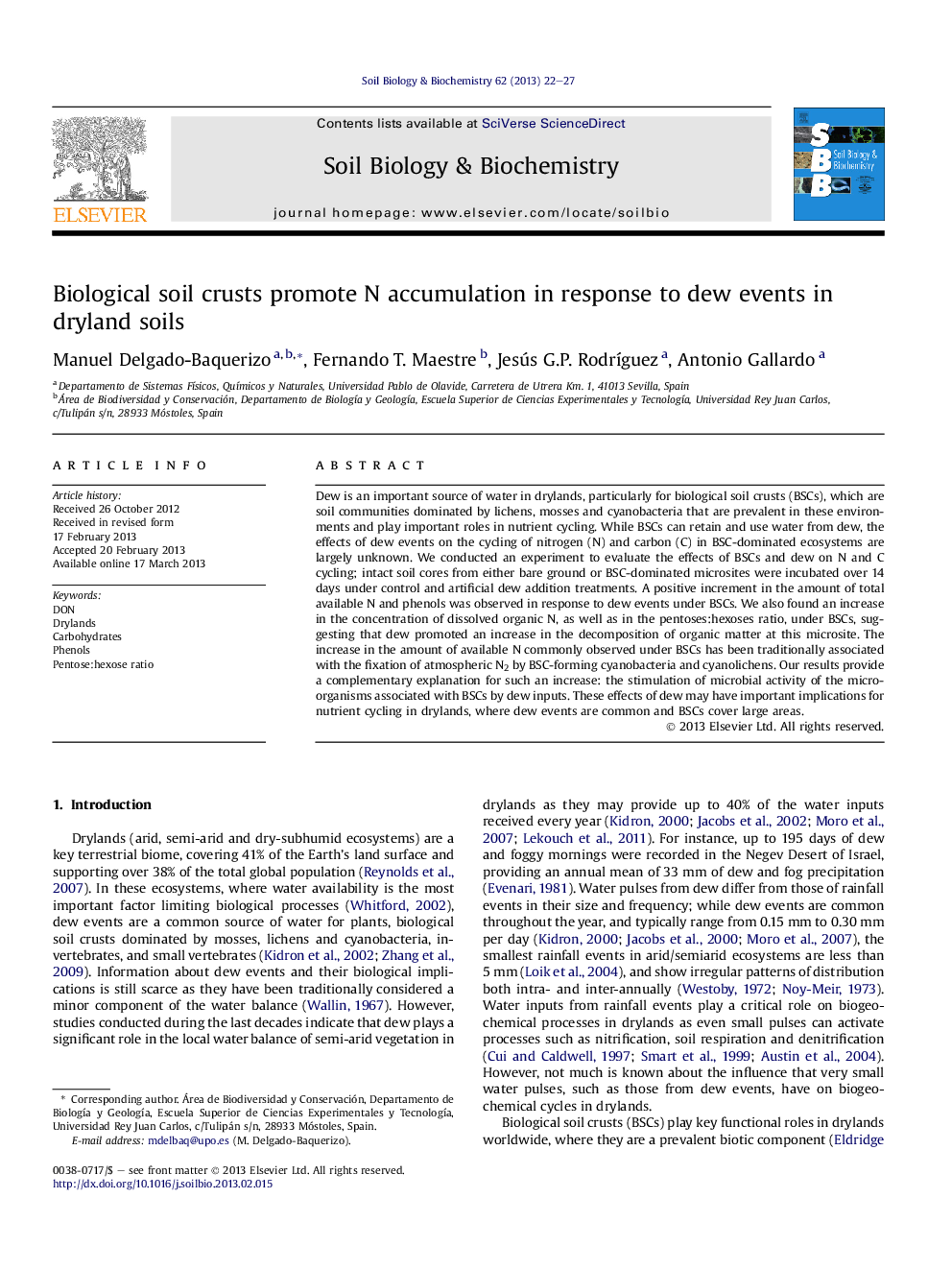| Article ID | Journal | Published Year | Pages | File Type |
|---|---|---|---|---|
| 8365236 | Soil Biology and Biochemistry | 2013 | 6 Pages |
Abstract
Dew is an important source of water in drylands, particularly for biological soil crusts (BSCs), which are soil communities dominated by lichens, mosses and cyanobacteria that are prevalent in these environments and play important roles in nutrient cycling. While BSCs can retain and use water from dew, the effects of dew events on the cycling of nitrogen (N) and carbon (C) in BSC-dominated ecosystems are largely unknown. We conducted an experiment to evaluate the effects of BSCs and dew on N and C cycling; intact soil cores from either bare ground or BSC-dominated microsites were incubated over 14 days under control and artificial dew addition treatments. A positive increment in the amount of total available N and phenols was observed in response to dew events under BSCs. We also found an increase in the concentration of dissolved organic N, as well as in the pentoses:hexoses ratio, under BSCs, suggesting that dew promoted an increase in the decomposition of organic matter at this microsite. The increase in the amount of available N commonly observed under BSCs has been traditionally associated with the fixation of atmospheric N2 by BSC-forming cyanobacteria and cyanolichens. Our results provide a complementary explanation for such an increase: the stimulation of microbial activity of the microorganisms associated with BSCs by dew inputs. These effects of dew may have important implications for nutrient cycling in drylands, where dew events are common and BSCs cover large areas.
Keywords
Related Topics
Life Sciences
Agricultural and Biological Sciences
Soil Science
Authors
Manuel Delgado-Baquerizo, Fernando T. Maestre, Jesús G.P. RodrÃguez, Antonio Gallardo,
